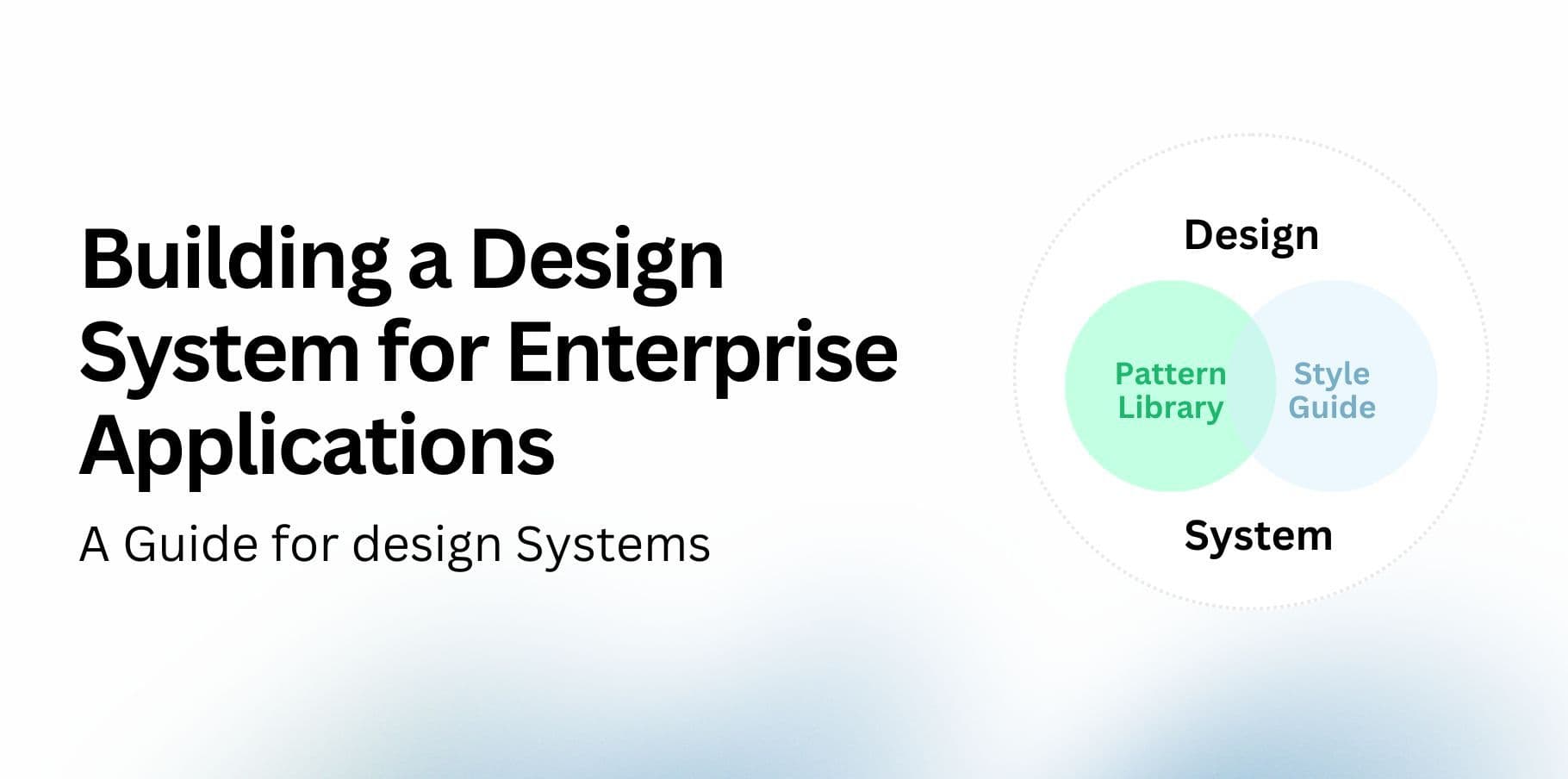Enterprise applications are intricate by nature, serving diverse user roles, complex workflows, and high-stakes environments. Building a design system for such applications requires a strategic approach that balances consistency, scalability, and adaptability. Here’s a guide to crafting an effective design system for enterprise software.
Understanding the Unique Needs of Enterprise Applications
Enterprise applications differ from consumer apps in several key ways:
Complex User Roles: Multiple user roles often require distinct interfaces and workflows.
High Stakes: Errors can have significant consequences, necessitating robust design patterns.
Customization Needs: Enterprises often demand tailor-made features, making flexibility essential.
Longevity: These applications typically have long lifecycles, requiring designs that can evolve over time.
Integration Challenges: Enterprise software often interacts with other tools and platforms, requiring seamless interoperability.
Regulatory Compliance: Many enterprise applications must adhere to strict industry regulations and standards, adding another layer of complexity.
A successful design system for enterprise applications must address these challenges head-on.
Step 1: Define Core Principles
Start by establishing the foundational principles of your design system. These principles will guide all design decisions and ensure alignment with business and user needs. Common principles include:
- Consistency: Create a unified experience across all modules and platforms.
- Scalability: Ensure the system can grow as features and teams expand.
- Accessibility: Prioritize inclusivity, ensuring the system meets accessibility standards like WCAG.
- Efficiency: Optimize for users’ workflows to minimize friction and maximize productivity.
- Resilience: Build components and workflows that remain robust under high load and edge cases.
- Flexibility: Allow for customization to address unique client or organizational needs without breaking core patterns.
Step 2: Conduct a Comprehensive Audit
Before building, audit existing interfaces, workflows, and user pain points. This includes:
- UI Audit: Catalog existing components, styles, and patterns. Identify redundancies and inconsistencies.
- Workflow Analysis: Map out key user journeys to identify inconsistencies and friction points.
- Feedback Collection: Engage with users, stakeholders, and developers to uncover common frustrations and needs.
- Competitor Analysis: Review similar enterprise applications to identify industry best practices and innovations.
This process provides a clear understanding of the starting point and areas for improvement.
Step 3: Design the Component Library
The component library is the backbone of your design system. Approach its creation with the following steps:
Identify Core Components: Start with foundational elements like buttons, input fields, modals, navigation, and data tables.
Standardize Variants: Define styles for states (e.g., active, disabled) and variations (e.g., primary, secondary). Include guidance for responsive behavior.
Design for Accessibility: Ensure components support screen readers, keyboard navigation, and high-contrast modes.
Document Usage: Clearly explain when and how to use each component to ensure consistency across teams.
Test for Flexibility: Validate that components can handle the diverse use cases typical of enterprise applications.
Prioritize Performance: Optimize components for fast loading and smooth interactions, even with large datasets.
Step 4: Establish Design Tokens
Design tokens are reusable design variables—like colors, typography, and spacing—that form the building blocks of your system. Define tokens to:
- Promote Consistency: Align UI elements with a single source of truth.
- Enable Theming: Support custom branding and dark mode with flexible token definitions.
- Streamline Updates: Simplify updates to styles across the application by modifying tokens.
- Support Localization: Define tokens for layouts and spacing that adapt to different languages and regions.
Consider organizing tokens into categories such as:
- Global Tokens: Universal values like primary colors and base typography.
- Component-Specific Tokens: Tokens tied to specific UI elements.
- Brand Tokens: Client-specific branding configurations.
Step 5: Build a Scalable Documentation System
A design system is only as effective as its adoption. Comprehensive documentation ensures that designers and developers can easily understand and apply the system. Include:
- Interactive Examples: Showcase components in action with live code snippets.
- Guidelines: Provide best practices for design and development, including do’s and don’ts.
- Code Snippets: Share implementation details for developers, including language-specific examples.
- Change Logs: Document updates to maintain transparency and encourage adoption of new features.
- Design Principles: Include the rationale behind design decisions to help teams make informed choices.
- Tool Integration: Provide guidance for using the design system with common design and development tools like Figma, Sketch, or React.
Consider using tools like Storybook, Zeroheight, or a custom-built documentation portal to make documentation interactive and engaging.
Step 6: Ensure Cross-Team Collaboration
Design systems thrive when teams collaborate effectively. Facilitate collaboration by:
- Establishing Governance: Form a dedicated team to maintain and evolve the design system. Include representatives from design, development, and product management.
- Encouraging Feedback: Create channels for teams to propose improvements or raise issues. Regularly review and incorporate feedback to keep the system relevant.
- Running Workshops: Train teams on how to use the system and incorporate it into their workflows. Tailor workshops for different roles, such as designers, developers, and product managers.
- Fostering a Community: Build a community around the design system with regular check-ins, showcases, and open forums to share learnings.
Step 7: Test, Iterate, and Evolve
A design system is never finished. Regularly test and refine it by:
- Collecting Feedback: Monitor how users and teams interact with the system. Use surveys, interviews, and analytics to gather insights.
- Tracking Metrics: Measure consistency, development speed, error rates, and user satisfaction. Establish benchmarks to track improvements over time.
- Iterating: Adapt to new business needs, technological advances, and user feedback. Plan for regular updates and communicate changes effectively.
- Conducting Usability Tests: Regularly test components and patterns in real-world scenarios to identify potential issues.
- Versioning: Implement a versioning strategy to manage updates and ensure backward compatibility.
Step 8: Address Enterprise-Specific Challenges
Enterprise applications often have unique requirements. Address these by:
- Supporting Legacy Systems: Ensure the design system can integrate with older technologies commonly found in enterprise environments.
- Enabling Extensive Customization: Provide hooks, configuration options, and extensibility to allow teams to adapt components without compromising consistency.
- Ensuring Security Compliance: Collaborate with security teams to build components that align with enterprise security standards.
- Handling Complex Data: Design for large datasets, including robust tables, charts, and filtering mechanisms.
Key Takeaways
Building a design system for an enterprise application is a multi-faceted process that requires careful planning and collaboration. By focusing on core principles, conducting thorough audits, and prioritizing scalability, you can create a design system that drives consistency and efficiency across your organization.
Remember, the ultimate goal of a design system is to empower teams to build better products—faster and with greater confidence. With thoughtful planning and continuous iteration, your design system can become a cornerstone of your enterprise application’s success.

